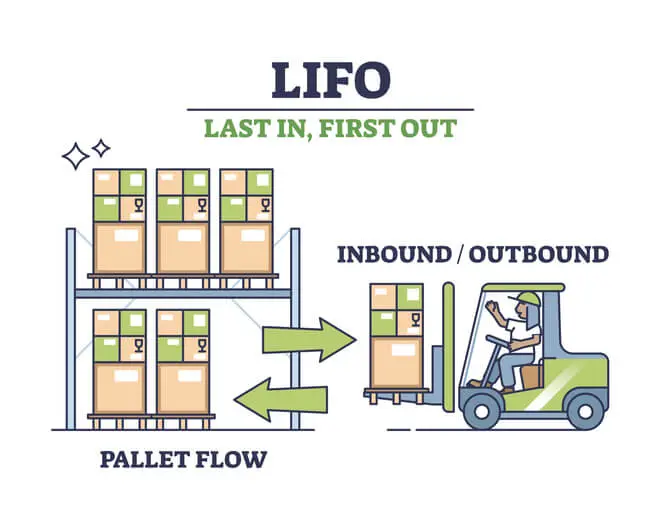Everyone is familiar with the basic flowchart of raw materials sent to a factory for manufacturing, with the completed, manufactured product or service being sent out for distribution. But how is this organized? The industry of supply chain logistics takes charge of the coordination of storage and shipping of goods and services along each major point of the flowchart previously described. Supply chain and logistics officers are integral for getting products onto shelves, as they understand what form of transportation is optimal for what is being transported, how to manage a warehouse while controlling all inventory coming in and out, and how to minimize costs as much as possible.
What is Supply Chain Logistics?
Supply chain logistics is the management of the network involved in transporting and storing goods from its point of origin to its point of consumption. Many activities are controlled by the supply chain logistics industry, such as procurement, transportation, warehousing, inventory management, and distribution. Supply chain logistics workers do not only handle the responsibilities of ensuring that goods end up where they need to be in a timely fashion, but they also face the constant pressure of having to perform their duties while minimizing costs and optimizing resources.
One might look at a t-shirt only as a simple item of clothing, however, its history runs much deeper in the supply chain logistics world. Let us take a look at what events might occur to reach the point of a happy customer leaving their favorite retail outlet with this t-shirt.

- First, the raw materials for the t-shirt need to be considered. A shirt made out of cotton would need sourcing from farms and suppliers.
- The cotton is then transported to a manufacturing facility, where it undergoes processing and is transformed from raw cotton, into stitched and woven fabric.
- This fabric is sent to a clothing manufacturer where it is cut, sewn, and assembled into the t-shirts that will be sold at a retail outlet. The finished t-shirts are packaged and prepared for distribution.
- Before distribution can take place, the packaged t-shirts are transported to a warehouse where they are stored until they are ordered by the retailer. From the warehouse, the t-shirts are shipped to the retail store.
- Finally, the t-shirt reaches the end consumer, who purchases and uses this product.
This example depicts a supply chain process where various logistics activities such as sourcing, transportation, inventory management, and coordination are involved to ensure the smooth flow of the t-shirts from production to consumption.
Are SCM and Logistics the Same?
While supply chain management and logistics are very similar in nature, they do have different areas of expertise and coverage, albeit similar. Logistics is more of a facet within the supply chain, focusing on the transportation and storage of products along the supply chain.
Supply chain management, however, is broader with all that it encompasses. It involves the coordination and integration of the various steps and processes mentioned within the t-shirt example above. Looking beyond the physical whereabouts of the materials and products, supply chain management looks at the supply chain with an elongated perspective, taking into account the strategic planning, coordination, and optimization of all activities involved in delivering products to the end consumer, communicating and liaising with all parties necessary such as suppliers, manufacturers, distributors, retailers, and more.
In essence, while logistics is a subset of SCM, it deals only with the tactical aspects of moving goods, whereas SCM calls for a more strategic and holistic approach, considering the entire network and its relationships to achieve overall operational excellence and customer satisfaction.
Enhancing Efficiency in Supply Chain Logistics
Supply chain logistics should always be striving towards the end goal of customer satisfaction. This can be achieved in many ways, such as improving delivery time, or minimizing costs along the way, which ultimately have an effect on the final selling price. Let us dissect some of the more achievable ways in which to enhance efficiency in supply chain logistics.
- Implementing advanced technology: The most effective way to reduce human error, which results in over-spending of time, costs, and resources, is the implementation of AI, software, and automation technology. Not only will human error be reduced, through the use of AI demand forecasting or supply chain management software, labour-intense processes which are usually lengthy in nature can be made shorter and more efficient, ultimately leading to saved costs. Contrary to popular belief, automation does not always replace the need for human labour, it only improves upon already-existing human effort, causing an increase in velocity and rate of processes and production. This is Intuendi’s speciality! We highly recommend implementing our automation software to streamline your supply chain processes.
- Optimizing transportation routes: Integrating the use of automation and advanced software into other processes of the supply chain, transportation routes can be strengthened through the use of route optimization software. The goal of this software is to help to determine the most cost-effective routes for transporting goods. Additionally, a deep understanding of the risks associated with transportation will help to keep important factors such as distance, traffic conditions, delivery schedules, and fuel consumption in mind when initially planning trade routes. These are also factors taken into consideration by route optimization software. Without having to rely solely on human effort, optimizing transportation routes can become a much easier and faster endeavor.
- Reducing Inventory Costs: Inventory costs can be reduced with the implementation of vast and numerous principles and strategies. Intuendi describes how the use of FEFO and FIFO strategies are useful for avoiding costs associated with spoilage in our Perishable Inventory Management article. Efficient and accurate demand forecasting software and techniques aid in the avoidance of overstocking or stock-outs, through a meticulous planning of how much inventory is needed and when. Another Intuendi article to check out! Inventory needs to be closely monitored at all times to reduce the risk of running into spoilage, overstocking or stock-out costs. By constantly ensuring that the right amount of stock is available at all times, the chances of running into unnecessary inventory costs are greatly decreased.
Ensuring Supply Chain Resilience
In an age where we have experienced a global pandemic, natural disasters, and rife geopolitical tensions, disruptions such as supplier disruptions, transportation delays, inventory shortages, and demand fluctuations have proven their ability to severely impact business operations and profitability. In the dynamic and uncertain business environment of today, supply chain resilience is of paramount importance.
Diversifying suppliers can enhance supply chain resilience through identifying and engaging multiple suppliers across different regions. Businesses are, therefore, able to reduce their dependency on a single source and mitigate the risk of disruptions. It is also helpful to begin developing contingency plans, where potential risks are mapped out, alternative sourcing options are established. These response strategies will enhance supply chain resilience through creating a culture where disruptions are taught to be addressed swiftly, before they have even begun.
Additionally, leveraging data and analytics provides valuable insights for proactive decision-making in times of distress. Real-time data analysis enables businesses to anticipate demand fluctuations, monitor supplier performance, optimize inventory levels, and identify potential risks in the supply chain, empowering them to make timely adjustments and mitigate potential disruptions before they occur, ultimately enhancing overall supply chain resilience.
Sustainability in Supply Chain Logistics
In recent years, the importance of sustainability in supply chain logistics has grown significantly alongside the major impact green initiatives have made in attempts to save our planet. It is no secret that supply chain activities have environmental and social impacts, however, there has been a call to address these concerns by being more eco-friendly in our business operations. Businesses are adopting sustainable practices throughout their supply chains, implementing green transportation strategies such as the use of electric vehicles, optimizing delivery routes, and adopting alternative fuel options. Other eco-conscious efforts being used to empower a more sustainable supply chain are waste reduction initiatives and carbon footprint management. These aim to minimise waste and promote recycling all in attempts to reduce and offset carbon footprints. Along with an ecological responsibility comes a social responsibility, encouraging ethical sourcing that focuses on selecting suppliers that adhere to labour practices, human rights, and environmental standards.
Read more on sustainable supply chains:
Why is Supply Chain Important in Logistics?
Supply chain logistics and management controls all processes and communication involved in moving a product from its point of origin to consumption. Streamlining each step through the use of efficiency-enhancing strategies can lead to monumental benefits such as a faster-moving supply chain, reduced costs, and improved customer satisfaction, ultimately garnering a competitive edge for one’s business. Make sure to read through Intuendi’s articles on the various topics discussed to gain a deeper insight into how your company can adopt strategies to strengthen and streamline its own supply chain, especially this article about demand forecasting. Find out how Intuendi’s supply chain management tool can help your business.






